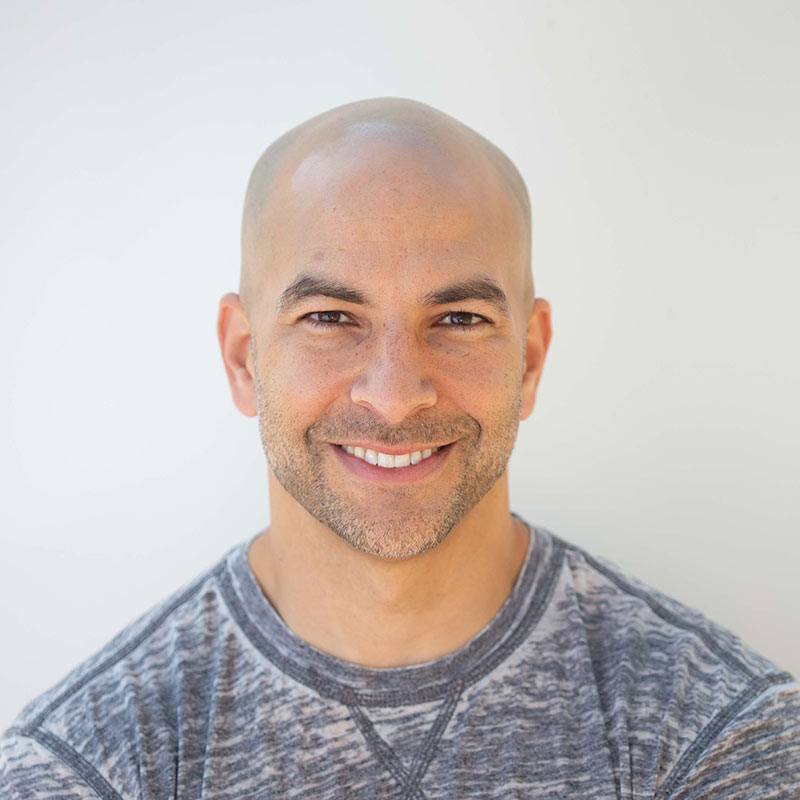Dr. Casey Halpern: Biology & Treatments for Compulsive Eating & Behaviors
Huberman interviews Dr. Casey Halpern, a neurosurgeon specializing in deep brain stimulation for movement and compulsive disorders. They discuss treatment options and future directions in brain stimulation for psychiatric illnesses, including eating disorders, OCD, and tremor. This episode explores the biology of these conditions and their therapeutic approaches.
Key Takeaways
High level takeaways from the episode.
Source
We recommend using this distillation as a supplemental resource to the source material.
Full Notes
Dr. Casey Halpern and Neurosurgery
- Dr. Casey Halpern is a neurosurgeon and the chief of neurosurgery at the University of Pennsylvania School of Medicine
- His laboratory focuses on bulimia, binge eating disorder, and other forms of obsessive-compulsive behaviors
- They develop and apply engineered devices to stimulate neurons that generate compulsions, sometimes removing or stimulating small bits of brain with electrical current, or even stimulating the brain through the intact skull
Neurosurgery Overview
- Neurosurgery involves a broad scope of procedures and treatments related to the central and peripheral nervous systems
- Some examples of neurosurgical procedures include deep brain stimulation, brain tumor removal, aneurysm clipping, and spine surgeries
-
Over the past two decades, there has been a push for neurosurgeons to subspecialize in specific areas of the field
Deep Brain Stimulation and OCD -
Deep brain stimulation (DBS) used to treat severe obsessive-compulsive disorder (OCD)
- Neurosurgeons like Dr. Gordon Baltuch perform DBS on 3–5 OCD patients per year
- Research focused on improving outcomes of DBS for OCD
- Obsessions and compulsions exist on a spectrum
- Some level of OCD can be helpful in certain professions (e.g., surgeons, CEOs)
- Uncontrollable obsessions and compulsions lead to a diagnosis of OCD
- Current treatments for OCD
- SSRIs (selective serotonin reuptake inhibitors) — first-line treatment
- Tricyclics — also target serotonin system, interact with noradrenergic and dopaminergic systems
- Exposure response prevention — a type of cognitive behavioral therapy offered by psychologists
-
Dr. Baltuch’s research aims to better understand brain circuits involved in OCD
- Invasive and non-invasive methods used to study human brain circuits
- Collaboration with imaging experts and geneticists to understand OCD at a broader level
OCD and Cognitive Therapies
-
Cognitive therapies and exposure to stressors can help patients with OCD
- About 30% of patients still suffer from moderate to severe OCD
- Current therapies for severe OCD include deep brain stimulation surgery and capsillotomy (ablation approach)
- Both have a responder rate of about 50%, but responders still have symptomatic OCD
Brain Areas Involved in OCD
- Dysregulated cortical control areas
- Orbital frontal cortex (OFC)
- Prefrontal cortex
- Basal ganglia (subcortex)
- Caudate putamen
- Dorsal striatum
- Ventral striatum (including nucleus accumbens)
OCD, Compulsive Behavior, and Reward Circuitry
- Compulsive behavior can be seen in various conditions, such as eating disorders and addiction
- Common denominator: urge to engage in behavior despite the risk
- Nucleus accumbens involved in gating reward-seeking behavior
- When perturbed, it can gate compulsive behavior
Personal Anecdote: Superstition and Compulsion
- Stimulant use (e.g., caffeine and ephedrine) led to the return of a grunting tick and the development of a knock-on-wood superstition
- Superstition disappeared after stopping the stimulant use
-
Possible connection between superstition, compulsion, and reward circuitry related to stimulants
Effects of Stimulants and Vulnerability -
Stimulants can have varying effects on individuals
- Some people may be more vulnerable to the effects of stimulants due to predispositions or existing conditions (e.g., OCD)
- Environmental exposures and stress can also contribute to the development of psychiatric disorders or anxiety
Nucleus Accumbens and Reward Circuitry
- Nucleus accumbens is a part of the brain’s reward circuits
- Interconnects with many parts of the brain and has various functions
- Involved in managing urges for rewards, especially when those urges put oneself or others at risk
Obesity, Eating Disorders, and Nucleus Accumbens
- Not all individuals with obesity have eating disorders, and not all individuals with eating disorders have obesity
- Binge eating disorder is often linked to obesity
- Loss of control eating is a common feature in eating disorders, obesity, addiction, and OCD
- Nucleus accumbens may play a role in the development and maintenance of these conditions
High-Fat Food and Nucleus Accumbens
- In mice, exposure to high-fat food can alter the functioning of the nucleus accumbens within two weeks
-
This altered function may predispose continued behavior and eventually lead to habit development
Binge Eating Disorder and Deep Brain Stimulation -
Binge eating disorder: most common eating disorder, affecting 3–5% of the population
- Likely underdiagnosed in obesity
- Two-hit hypothesis for the development of binge eating disorder
- Predisposition: all humans have some level of predisposition due to the availability and palatability of modern foods
- Second hit: could be related to anxiety or other factors that trigger the onset of the disorder
- Deep brain stimulation as a potential treatment
- Goal: restore normal functioning to the nucleus accumbens, which is involved in reward processing and can be hijacked by strong rewards like high-fat foods or drugs of abuse
- In mice, a signal can predict when they will lose control, and delivering brief stimulation at that time can block the behavior and restore normal function to the circuit
- Human trial in progress
Understanding Binge Eating Disorder
- Binge eating disorder patients may binge about once a day or lose control multiple times a week
- Binge: eating an enormous amount of food in a brief period of time with a sense of loss of control
- Loss of control eating: can happen dozens of times a week
- Both elevated and decreased autonomic arousal and alertness can lead to binge eating
- Anxiety or stress can trigger binge eating
- Alcohol consumption can also lead to binge eating, despite its sedative effects
Deep Brain Stimulation in Clinical Trials
- Stimulation delivered briefly (5–10 seconds) to disrupt perturbed signaling in the nucleus accumbens
- Intended to interrupt circuit aberrations that lead to dangerous behaviors like binge eating
-
Challenges in determining the effectiveness of deep brain stimulation
- Assessing patients’ feelings and impulses during stimulation
- Determining whether stimulation leads to reinforcement or disruption of binge eating behaviors
Excess and Refined Foods
-
High fructose corn syrup in many foods, even bread
- Cheap, refined foods can be dangerous and change reward circuits
- Headaches from eating such foods may be an evolutionary advantage
Predisposition and Stress
- Predisposition to vulnerability to certain foods
- Stressful events or recurring stressors can contribute to eating disorders
- Society’s stigmas around obesity and anorexia can exacerbate the problem
Studying Eating Disorders
- Difficult to control for variables in a well-controlled study
- NIH funded trial approved by FDA for research on eating disorders
- Goal: identify craving cells in the nucleus accumbens
Craving Cells and Appetitive Behavior
- Nucleus accumbens is almost a centimeter in size
- Different subregions of the amygdala and nucleus accumbens can have different effects
- Craving is a relatable term for those with binge eating disorder or obesity
Provoking Food Craving in the Operating Room
- Patients provide pictures of food they typically crave
- Patients are fasted before the procedure
- Wire is lowered into the nucleus accumbens while patients view pictures of food they crave
- Olfactory cues could be a future addition to the study
Importance of Studying the Brain and Eating Disorders
- Neurosurgeons are like “astronauts of the brain”
- This research is on the extreme edge of what we don’t know about brain function
-
Far different from giving a mouse access to high-fat food
Cravings and Compulsions in Eating Disorders -
Cravings can lead to compulsive behaviors, such as binge eating or hiding food consumption
- Researchers are studying the brain activity of craving cells to better understand these behaviors
Studying Craving Cells in Real Time
- Researchers listen to and analyze single neurons to understand their role in cravings
- The goal is to identify craving cells and deliver stimulation safely to elevate mood and disrupt the craving-binge cycle
Anorexia and the Nucleus Accumbens
- Anorexia is a deadly psychiatric condition with a high mortality rate
- The nucleus accumbens, part of the brain’s reward circuit, may also be involved in anorexia
- The compulsions in anorexia and obesity may be more similar than different, both driven by societal pressures and brain vulnerabilities
Deep Brain Stimulation for Anorexia
- Preliminary studies have shown benefits of deep brain stimulation targeting the nucleus accumbens for anorexia
- Researchers are working on developing a more episodic approach with responsive stimulation to target the compulsion to withhold from eating
Obesity Study and Anorexia Trial - Obesity study took two years to get funded
- Hope to have a similar trial for anorexia at Penn in about a year
- Other labs also working on anorexia research due to clear need
Non-Invasive Brain Stimulation
- Transcranial Magnetic Stimulation (TMS) used to treat depression and other brain syndromes
- Spatial precision not great, but ultrasound may offer more precision
- Neurosurgeons should be part of the discussion for non-invasive approaches
TMS and FDA Approval
- TMS is FDA approved for depression, OCD, and nicotine addiction
- Targets frontal lobe for depression and OCD, different target for addiction
- Difficult to direct TMS deep below the cortex, but can target superficial structures with high connectivity to deep structures
Ultrasound in Brain Stimulation
- Transcranial Magnetic Resonance Guided Focused Ultrasound (MRI-guided focused ultrasound) is FDA approved for delivering ablations non-invasively
- Researchers working on using ultrasound for modulating neuronal activity and opening the blood-brain barrier for medication delivery
- FDA approved for treating tremor in Parkinson’s and Essential Tremor patients
-
Offers a non-invasive alternative to electrode placement in the brain
Non-Invasive Approaches and Awareness in Mental Health -
Essential Tremor is the most common neurologic condition in patients over 70
- 10 times more common than Parkinson’s
- Lacks public awareness and champions like Michael J. Fox for Parkinson’s
- Focused ultrasound for tremor
- Non-invasive ablation to the brain
- Effective for tremor patients
- Potential for psychiatric diseases, obesity, and eating disorders
- Challenges
- Identifying the correct ablation target for different conditions
- Need for modulatory experiments and invasive recordings
- Stereoencephalography
- Invasive electrodes placed throughout the brain to study epilepsy
- Safe and well-tolerated procedure
- Potential for studying mental health disorders like OCD and depression
-
Importance of awareness
- Detecting internal states and recognizing when veering towards negative behaviors
- Powerful tool for managing mental health conditions
- Some patients still struggle despite high awareness and treatment resistance
Psychiatric Monitoring Unit and Eating Disorders
-
Psychiatrist and eating disorder specialist induce a mood related to each patient’s self-described binge episode
- Video and brain signal recordings synchronized to understand what happens before a binge
- Improving patient awareness could help many patients, but some severe cases still struggle to control their behavior despite awareness
Role of Machines and Artificial Intelligence
- Some labs use signature patterns within voice and other cues to help predict depressive episodes
- Machine learning and AI could potentially help anticipate impulsive behaviors
- Scalable solutions needed to address large-scale public health problems like obesity, opiate crisis, depression, and suicidality
Neurosurgeons and Hand Protection
- Neurosurgeons often avoid activities that put their hands at risk
- Importance of maintaining good posture and physical health for specialized professions
-
Powerlifting and other exercises can be beneficial with close supervision and experienced trainers
Neurosurgeons and Calmness -
Neurosurgeons often display a calm demeanor
- May be due to rigorous training and experience
- Confidence comes from years of practice
- Different subspecialties within neurosurgery may attract different personalities
- Deep brain stimulation surgeons may be more intellectual and have better bedside manner
- Vascular neurosurgeons may be less friendly due to lack of sleep
- Spine surgeons may be very busy and focused on their work
- Neurosurgeons learn to prioritize their time and make the most of their limited free time
- Develop strong connections with colleagues and friends
- Learn to cope with stress and be efficient in their work
Coping Mechanisms and Tools for Neurosurgeons
- Meditation can be a helpful tool for managing stress
- Many neurosurgeons may not have time for meditation during their training
- Exercise can also be beneficial for maintaining physical and mental health
- One example: taking the stairs instead of the elevator
- Sleep is crucial for overall well-being, but often lacking in neurosurgery training
- Poor sleep habits can lead to poor decision-making and vulnerability
-
Neurosurgeons may develop their own tools and strategies for staying calm and focused in the operating room
- Some may have a meditative practice or other techniques for calming themselves in real-time
- Learning how to still the body and mind is an important skill for neurosurgeons
Support the Podcast
Huberman Lab Premium Subscription
- $10/month
- 1 Ask Me Anything (AMA) episode per month
- Significant contribution to fund human scientific research selected by Dr. Huberman (with dollar-for-dollar matching from the Tiny Foundation)
- Early-access to Huberman Lab live events
- Subscribe here
Huberman Lab Neural Network Newsletter
- Zero-cost newsletter with summaries of podcast episodes and protocolsToolkits for sleep, focus, neuroplasticity, cold/heat exposure, fitness, and flexibility
- Sign up at hubermanlab.com (email not shared)
- Downloadable PDFs of previous newsletters available without sign-up
Huberman Lab Social Media
Sponsors
Levels Continuous Glucose Monitor
- Helps assess the impact of food, food combinations, and timing on blood glucose
- Provides real-time feedback on diet and blood sugar
- levelshealth.com/huberman
Inside Tracker
- Personalized nutrition platform that analyzes blood and DNA data
- Provides personalized dashboard with nutrition, behavior, and supplement recommendations
- Now includes apolipoprotein B (APOB) measurement in their ultimate plan
- Visit insidetracker.com/huberman for 20% off any plan
Momentous
- High-quality supplements used by sports teams and in Department of Defense studies
- Single ingredient formulations
- livemomentous.com/Huberman
LMNT
- Sciencebacked ratio of electrolytes: 1 gram of sodium, 200 milligrams of potassium, and 60 milligrams of magnesium and no sugar.
- drinklmnt.com/huberman for free sample pack
Whoop
- Fitness wearable device that tracks daily activity and sleep
- Provides real-time feedback on optimizing health
- Visit join.whoop.com/Huberman for the first month free
Roka
- Eyeglasses and sunglasses designed for athletes and everyday people
- Visit roka.com and enter code Huberman for 20% off the first order
Helix Sleep
- Customized mattresses and pillows for better sleep
- Visit Helixsleep.com/Huberman for up to $350 off and two free pillow


